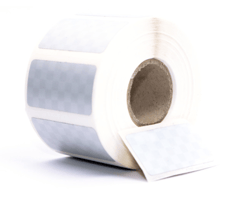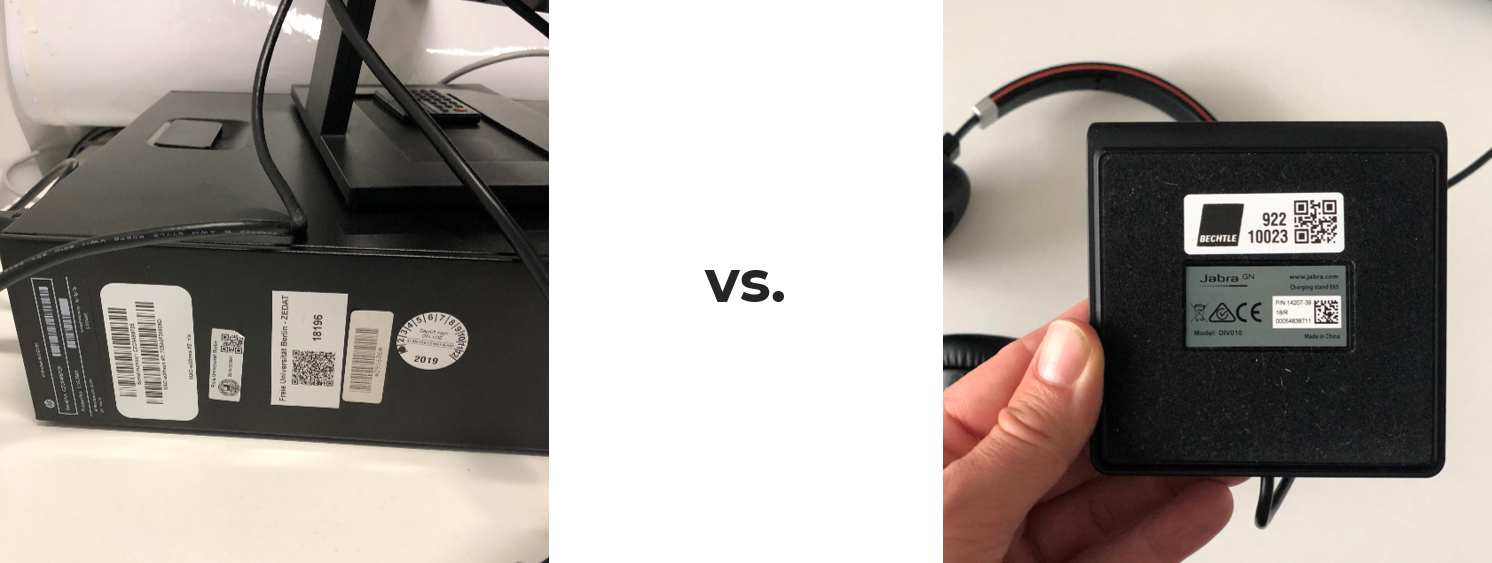The five best labels for all your inventory needs
A digital inventory is critical for a modern business. But it’s also tricky! There are so many different decisions to make, starting with how you will label your inventory. But which label fits your individual business needs best? To save you some time, we’ve done the research for you – here is all the information on what labels are, why they are crucial to a digital inventory and our top five label choices.
In this article, we’ll tell you...
- … what your business can gain by using inventory labels
- … what kind of labels there are
- … what you should look out for when choosing a label
- … what specific labels are used for
- … what tips we give our customers concerning labels
Digitizing your inventory encompasses the not-so-small feat of documenting every single item in a software made for your business. Items are brought from the physical into the digital world by way of a label. This label contains all the crucial information of that item, be it a laptop or a large factory machine. Labels for inventory purposes are made to be as thin, adhesive and durable as possible, so they last as long as the item does.
Specific labels and their uses
There are a couple different kinds of labels that are useful to a business – inventory labels, room labels, private labels and leasing labels.
Inventory labels mark each separate item in an inventory.
Room labels mark specific rooms, hallways or buildings. This allows for specified documentation of inventory within a room/physical space.
Private labels mark items that an employee brought into the office, but stay there permanently. For example, if employee Frank wants to keep a coffee maker in the communal break room.
Leasing labels mark any and all items on loan to the company, for example furniture in a temporary office branch. Marking leased and owned equipment differently makes an obvious distinction between the two, allowing for a better organizational structure. Leasing labels are usually easier to peel off, leaving no residue.
Four things to keep in mind when choosing the design for a label
- The label type (Inventory, Room Private or Leasing label)
- Clearly visible identification number
- Clearly visible QR-Code, Barcode or Data Matrix Code
- Name of the company
.png?width=320&name=Inventaretikett%20(en).png)
.png?width=326&name=Raumetikett%20(en).png)
In addition to the basic information listed above, companies can choose to print other information onto their labels, for example the name of whatever item is being labeled or the serial number of the item.
Labels and material
What material you choose for your label depends on the surface you want to stick it on. This determines not only the material for the label itself, but also for the adhesive that should be used. The two most common materials for labels are paper and polyester.
The label should be durable and have at least the same lifespan as the item labeled. Depending on the item, some labels need to be able to adjust to temperature fluctuations or weather changes.
Our top five labels and what you should use them for
Number 1 – RFID labels
RFID labels are our favorite, because they are just so incredibly innovative! The cataloging via these labels happens via radio signal, which means you don’t have to physically see it to cataloging. Simply walking past it with the scanner is enough! We’ve explained how RFID labels work more precisely in this blog entry. In addition to being incredibly practical, these labels are highly durable, guaranteeing years of use with little to no wear and tear. They can be applied to almost any material, including plastic and metal.
They are most commonly used in
- Manufactauring, for example in the automobile industry,
- Metal and plastic containers
- Metal and plastic objects
Number 2 – PET labels (Polyester)
PET labels are one of the most durable labels there are. They can withstand temperature between –40 C and 150C, they are impervious to UV light, water and scratches. Despite their robustness they are easy to apply and remove.
They are most commonly used in:
- Objects in laboratories
- Identification of various building components
- Machine identification
- Household objects
- Electronics
- Automobile industry
Number 3 - Paper labels
Paper labels are quite resilient as well and are have strong adhesive properties, making them difficult to remove. They are also UV light resistent, but should’t come in contact with water or moisture of any kind, as this destroys it. They can withstand tempetures between –10C and 80C.
They are most commonly used in:
- Assets in warehouses or offices
Numb er 4 – Anti-Tamper-Labels
er 4 – Anti-Tamper-Labels
Anti-Tamper-Labels are used to discourage tampering with an object rather than giving it a digital twin. These labels are extremely durable and when removed, they leave a distinctive checkerboard marking on the surface they were on, indicating whether someting was tampered with. These labels are perfect for marking briefcases or boxes that should be kept closed.
They are most commonly used in:
- Assets that should not be tampered with in warehouses or offices
Number 5 – Chemgard labels
Chemgard labels are extremely durable and used to mark chemical compounds. These labels are made of PET and resistant towards fatty substances. They are used especially often in labs.
They are most commonly used in:
- Laboratories and chemical transportation
Bonus: Applying labels correctly
Bevor you wildly start applying labels in a fit of productivity, you should come up with a plan for how you want to label your items. Generally, labels should be applied in such a way that they last as long as possible, aren’t directly visible but still easy to find. For example, laptops and tablets should be labeled on the back. You should also make sure, that if your items are labeled for multiple different purposes, it’s still done in a way that’s still transparent. Often enough, we see things like this when we are doing a job:

Download our free Inventory Guide here!

